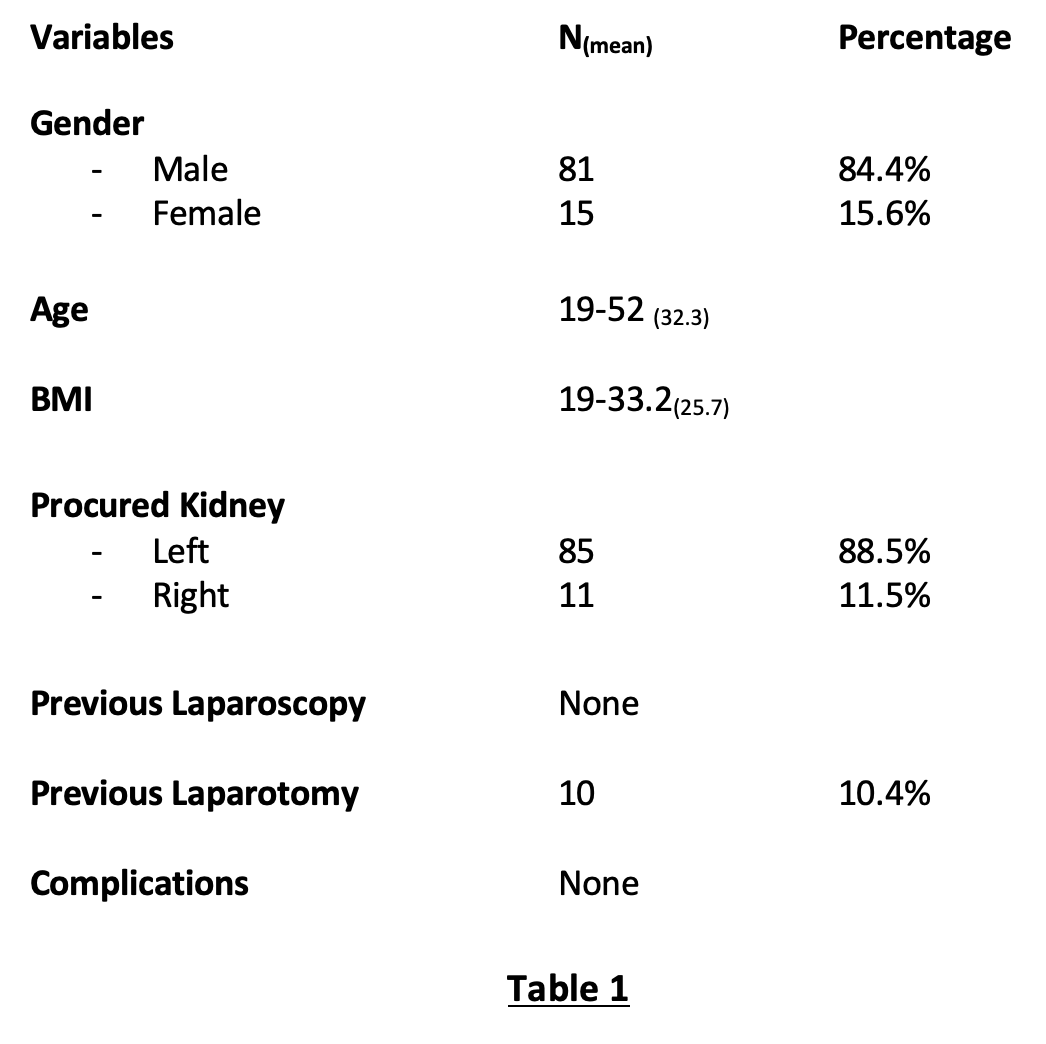Optical Trocar Entry Technique in Laparoscopic Donor Nephrectomy
1General Surgery, King Abdulaziz Medical City, Jeddah, Saudi Arabia, 2Adult Organ Transplant Surgery, King Abdulaziz Medical City, Riyadh, Saudi Arabia
Meeting: 2020 American Transplant Congress
Abstract number: B-026
Keywords: Kidney, Laparoscopy, Living donor, Post-operative complications
Session Information
Session Name: Poster Session B: Kidney Living Donor: Other
Session Type: Poster Session
Date: Saturday, May 30, 2020
Session Time: 3:15pm-4:00pm
 Presentation Time: 3:30pm-4:00pm
Presentation Time: 3:30pm-4:00pm
Location: Virtual
*Purpose: The published data of safety, practicality and applicability of the optical trocar entry technique in laparoscopic donor nephrectomy in general have been previously investigated. However, the use of optical trocar technique specifically in laparoscopic donor nephrectomy has not been published yet. Our aim is to describe our technique and share our experience with this technique as it has become our standard in all laparoscopic donor nephrectomy cases since March 2018. We believe that the optical trocar method (without Veress needle) is a safe and rapid method of primary trocar placement in the laparoscopic donor nephrectomy procedure.
*Methods: All laparoscopic donor nephrectomy cases done in our center since March 2018 until Sept 2019 were included. Charts and operative reports of all cases were reviewed. We excluded all donors with BMI of 18 or less (because midline open technique was used in those subjects). Our technique entails using direct optical trocar entry method in the lateral rectus line using a 30 degrees’ camera.
*Results: Our experience included 96 patients. The data has shown that the mean age of our patients was 32.3 years old. Among our patients, 81 patients were male (84.4%) and 15 patients were female (15.6%). Most of the patients have donated their left kidney (85 subjects), and the remaining donated their right kidney (11 subjects). All demographics have been summarized in Table 1. Out of 96 patients, none had previous laparoscopy, and 10 patients had history of laparotomy for different reasons. We observed for complications including false entry (extraperitoneal), mesenteric hematoma, retroperitoneal hematoma, bowel or vessel injury, and the rate of conversion to open technique. None of our patient have developed any immediate complications.
*Conclusions: From our experience, we find the optical port entry technique (without Veress needle) to be the fastest, easiest, and safest technique for primary port insertion in laparoscopic donor nephrectomy.
To cite this abstract in AMA style:
Alshehri AR, Mahmoud AK, Saad KOBin, Aboalsamh GA. Optical Trocar Entry Technique in Laparoscopic Donor Nephrectomy [abstract]. Am J Transplant. 2020; 20 (suppl 3). https://atcmeetingabstracts.com/abstract/optical-trocar-entry-technique-in-laparoscopic-donor-nephrectomy/. Accessed December 19, 2025.« Back to 2020 American Transplant Congress

